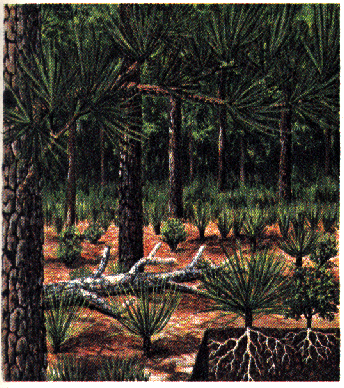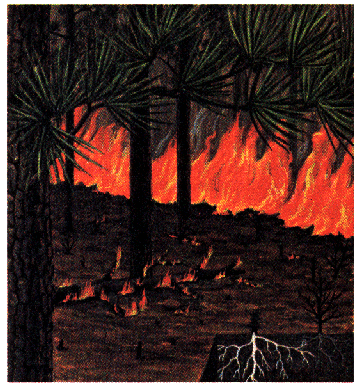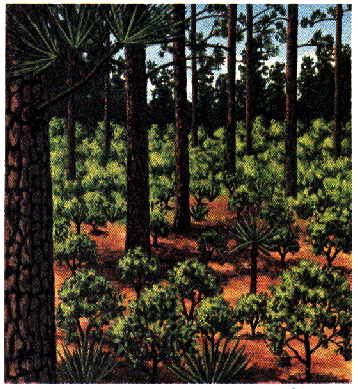Fire & Succession Worksheet
The longleaf pine forest

3a. Mostly tall long leaf pines with some baby long leaf pines
and a few deciduous shrubs. The white roots indicate the plant is alove in the
cutaway at lower right in the diagram.
The 4 pictures above and below represent a series of events that
occur in the great coniferous forest found in the southeastern United States.
In this region, the longleaf pine is almost the only large tree. Occasionally
there may be seedlings oand saplings of deciduous trees. Between three and seven
years of age, long leaf pines look like clumps of grass (figure 3a above). While
in this "grass stage," the young trees develop deep roots in which
food is stored (See cutaway section in the lower right corner of figure 3a above.).
Fires in these forests generally are confined to the ground,
where they burn grasses and the sparse growth of deciduous shrubs and saplings
(figure 3b).

3b. A forest fire burns across the ground. Note which plant
has survived by the white color of the roots in the cutaway portion of the picture.

2c. The fire sometimes moves into the crown of the trees, but
if the fire isn't too hot, and the amount of dry fuels on the ground and in
the trees is not too high, the trees survive.
After the fire, the adult long leaf pines grow rapdily due
to the fertilizers on the ground, growing both in height and thickness. They
also develop a thick, fire-resistant bark in response to the fire. This scene
would look like figure 3a again.

3d. The picture above illustrates what the longleaf pine forest
would look like if no fire occurred. What has happened to the size and
number of the baby deciduous trees and shrubs?
Slichter




